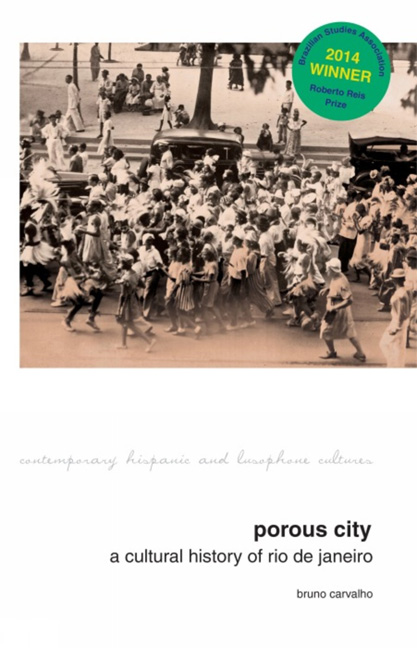Book contents
- Frontmatter
- Contents
- List of Maps
- List of Figures
- A Note on Translation
- Preface
- Introduction: In Search of Things Past: Mapping Rio
- 1 At the Centre of an Imperial Capital: Swamps, Yellow Fever, and Gypsy Parties
- 2 A Master on the Periphery of a Periphery: Popular Music, Streetcars, and the Republic
- 3 Beyond the Belle Époque: On the Border of a ‘Divided City’
- 4 Afro-Jewish Quarter and Modernist Landmark
- 5 Writing the ‘Cradle of Samba’: Race, Radio, and the Price of Progress
- 6 ‘It's (Mostly) All True’: The Death of a Neighbourhood and the Life of Myths
- Conclusion: The Future Revisited: Where Has the Past Gone and Where Will it Go?
- Acknowledgements
- Works Cited
- Index
2 - A Master on the Periphery of a Periphery: Popular Music, Streetcars, and the Republic
- Frontmatter
- Contents
- List of Maps
- List of Figures
- A Note on Translation
- Preface
- Introduction: In Search of Things Past: Mapping Rio
- 1 At the Centre of an Imperial Capital: Swamps, Yellow Fever, and Gypsy Parties
- 2 A Master on the Periphery of a Periphery: Popular Music, Streetcars, and the Republic
- 3 Beyond the Belle Époque: On the Border of a ‘Divided City’
- 4 Afro-Jewish Quarter and Modernist Landmark
- 5 Writing the ‘Cradle of Samba’: Race, Radio, and the Price of Progress
- 6 ‘It's (Mostly) All True’: The Death of a Neighbourhood and the Life of Myths
- Conclusion: The Future Revisited: Where Has the Past Gone and Where Will it Go?
- Acknowledgements
- Works Cited
- Index
Summary
Not everyone can claim to know an entire city.
Machado de Assis, Esau and JacobRio de Janeiro would reach the last decades of the nineteenth century marked by porosity. Order/disorder, colony/metropolis, centre/ periphery, black/white: not much seemed to fall along the lines of a neat dichotomy. Nowhere does this seem clearer than in the formation of Brazil's earliest urban musical genres, through processes that broke down yet another binary, popular and erudite. Quite a bit has been written about how multiracial marching bands and church-related orchestras created fecund exchanges between so-called popular and erudite music and musicians, to the point that it becomes difficult (or arbitrary) to draw a distinction. Rio was already a city of extremes of wealth and poverty, but these extremes were placed under close and constant contact. If social relations were nothing to idealize – frequently brutal and exploitative – they did seem to have consequences to the development of musical expressions like maxixe, choro, and eventually samba.
In his essay ‘Machado Maxixe’, José Miguel Wisnik argues that the short story ‘Um Homem Célebre’ (A Famous Man) by Machado de Assis (1839–1908) – perhaps Brazil's most eminent writer – is ‘a curious and penetrating analysis of Brazilian musical life at the end of the nineteenth century’ (2004: 21). It tells of Pestana, a successful composer of beloved ‘polcas’ with maxixe-evoking titles, who remains unable to fulfil his dream of creating classical music in the mold of his masters Mozart and Beethoven. To Wisnik, Machado de Assis intuitively perceives and articulates how Rio's popular music appropriated European genres, converting them to Brazilian patterns of a largely African syncopated rhythmic base (41). The essay goes on to propose the Brazilian rhythmic solution as homologous to the oscillation between order and disorder seen by Antonio Candido in Memórias de um sargento de milícias. We can extend the observation to how some of Rio's finest writers spatialize their fictions, or fictionalize the city's spaces. Wisnik further compares the Brazilian musical condition to the condition of the mulato, citing composers like José Maurício Nunes Garcia (1767–1830) and Ernesto Nazareth (1863–1934).
- Type
- Chapter
- Information
- Porous CityA Cultural History of Rio de Janeiro (from the 1810s Onward), pp. 45 - 73Publisher: Liverpool University PressPrint publication year: 2013

